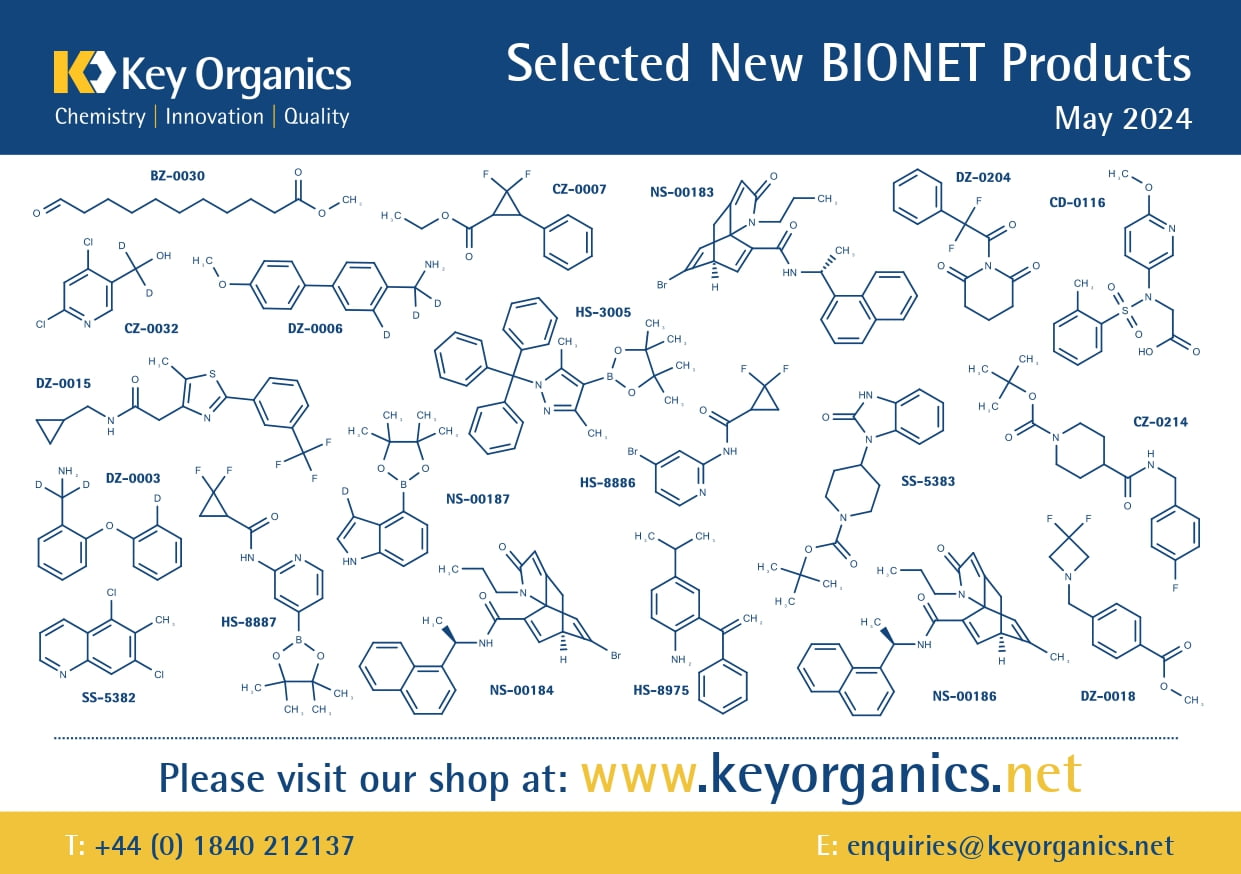Key Organics and Photodiversity are delighted to announce a collaboration by bringing to market a range of novel and innovative compounds for the research community.
The compounds are accessed via photochemistry, both in batch and flow and will give researchers access to sp3-rich scaffolds for further elaboration.
A selection of these can be found below.

Key Organics is a leading provider of Chemistry Services and Research Compounds. They offer custom synthesis, FTE/Contract Synthesis, Consultancy Services, Analytical Chemistry, Collaborative R&D, Process R&D/Scale-up and more. They have >130,000 compounds in their BIONET collection including Intermediates, Fragment Libraries, Biochemicals and Screening Compounds, with >95% in stock.
With over 30 years’ experience serving the worldwide R & D market, Key Organics has a reputation for high quality and customer service.
Photodiversity Ltd (Photodiversity) is a novel start-up company founded by Professors Kevin Booker-Milburn and Brian Cox that focuses on providing complex, sp3-rich scaffolds and libraries for drug and product discovery in the Pharmaceutical and Agrochemical industries.
Their unique capability in Photochemical Synthesis and Automated Library Production allows them to produce novel building blocks and proprietary fragment, focussed and diversity libraries for commercialisation. They began trading in November 2015 and have worked with a number of large clients and are currently expanding to meet the demands of a rapidly increasing client base.
They operate laboratories in the Universities of Bristol (Photochemical Scaffold Synthesis) and Sussex (Automated Library Generation and Production).
Synthesis at Photodiversity
One of the key strengths of Photodiversity is their ability to produce sp3-rich molecules for diversification through library synthesis. A good example of this is in the synthesis of the tricyclic cyclobutene-anhydride below, which can be scaled in the Firefly reactor with productivities approaching 1 mole per hour. They have demonstrated that this versatile product can undergo a number of transformations such as sequential thermal ring-opening and spontaneous cyclisation to give g- and d-lactones and lactams fused to medium sized rings.

Examples of equipment for photochemical synthesis


≥ 1 kg / day


